Cañon Geology
“Colorado College geology professor Christine Siddoway made the discovery of her career from the saddle of a road bike.”
It all started when…
Precambrian rocks of the Pikes Peak Region formed from molten magma that cooled miles deep within the crust of the Earth approximately 1.5 billion years ago. Before the mountains were uplifted, oceans, shallow seas, and swamps had each left their rock impressions behind.
Sandstones and Shales found on the eastern plains and foothills of Colorado Spring have fossils of animals that lived in an ocean 70 million years ago. The Pierre Seaway moved toward the present ocean as these solid granite mountains rose.
Mountain-building forces began pushing blocks of solid granite to high elevations 65 million years ago. Cheyenne Mountain was shoved out and over rock formations that are younger than the granite. The upheaval and release of pressure on the granite caused it to expand and form many joints and fractures. Erosion followed mountain building and nearly leveled the mountains with the plains. Approximately 17 million years ago, earthquakes forced the mountains to rise again and the foothills were being scoured by intense erosion.
At a much slower rate, this process continues today. The Ute Pass Faultline that separates these uplifted mountains from the foothills and plains can be noticed at the base of Cheyenne Cañon where the granite of Mount Cutler rises abruptly through the sedimentary sandstones and clay soils on the flat-topped mesa above the Starsmore Discovery Center.
Water Shapes the Land
Water is the universal solvent that is slowly tearing these mountains down. The combined effect of uplifted mountains, torrential flooding from glaciers melting after the Ice Age, and the erosion of the plains have all influenced the creeks ability to carve rock out of the Cañon and deposit its load of silt, sand and gravel onto the foothills and plains below.
Thunderstorms cause tremendous downpours and flash floods. You can see the mountains dissolving into muddy gravel during a sever storm. Within minutes, the creek becomes a torrent of red earth-colored water, and it does not clear until hours after the storm.
Rock Resistance Creates Waterfalls
Waterfalls are created by a difference between rocks and their ability to stand up to water that carries rocky debris which cuts through the Cañon and polishes the waterfalls.
Pikes Peak Granite is Weak.
The pink-colored Pikes Peak Granite makes up most of the rocky Cañon. It has many joints and fractures. Water gets into cracks in the rocksand it easily crumbles into gravel. When the water freezes, it expands and forces the cracks to open wider. For millions of years this freezing and thawing of water has caused the Pikes Peak Granite to shatter in slow motion. Notice the gravel or “scree” slides on the mountains. The creek has no trouble cutting through and removing this loose rock material.
The three most noticeable materials of the Pikes Peak Granite are the milky and smoke Quartz, the pink Feldspar and the silver or golden to black Micas. The Feldspar and Mica weathers easily.Quartz Monzonite boulders are Strong. The creek has carved deep into the Pikes Peak Granite and has exposed large, rounded boulders of the gray-colored Quartz Monzonite, which is formed like a solid rock bubble within the more fractured and jointed Pikes Peak Granite. The Quartz Monzonite is more durable with less Mica and Feldspar and more Quartz. The water has smoothed and polished these boulder outcroppings into water slides with steep falls.
Algae and loose gravel on the surface of wet rocks adds danger and slippery conditions. Please, do not risk your safety – stay on the trails behind barriers and out of the creek!
Information taken directly from www.springsgov.com
Original article published in Colorado Springs Gazette on 30 October 2014: LINK
